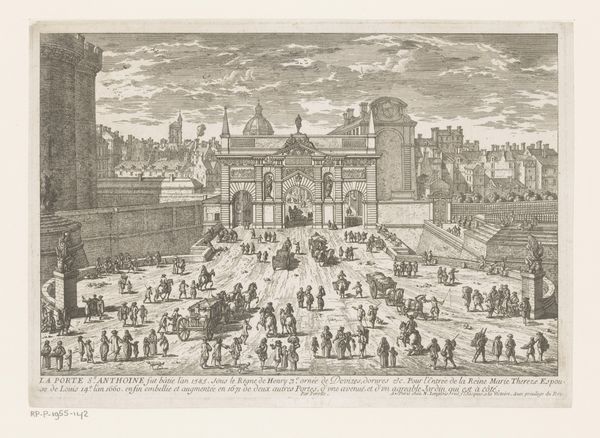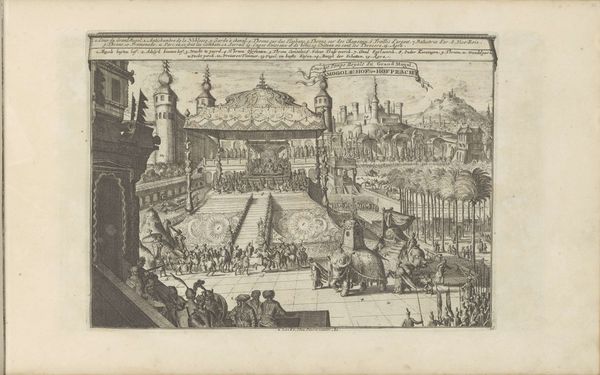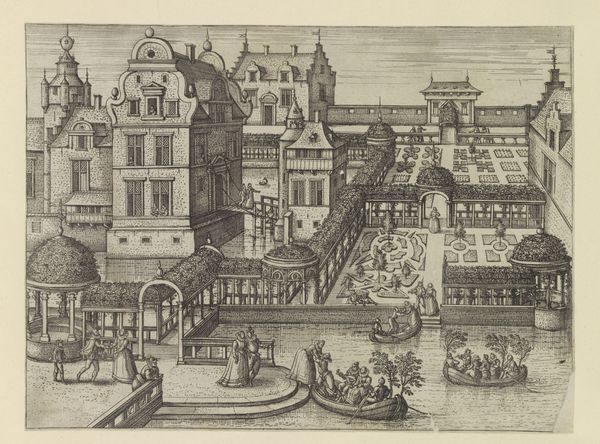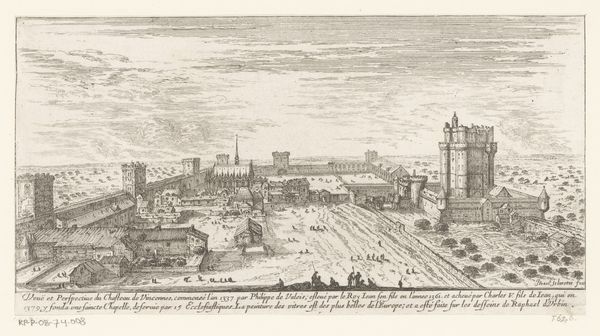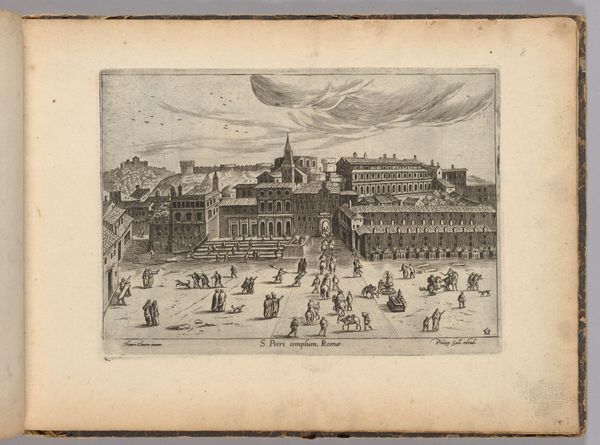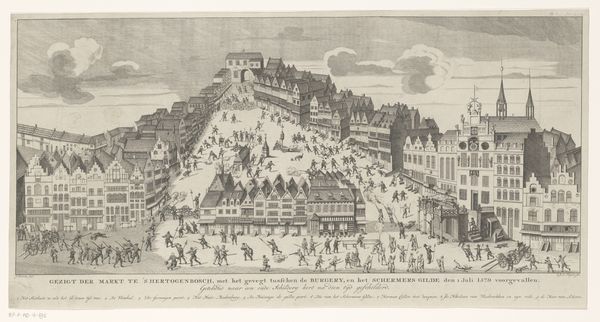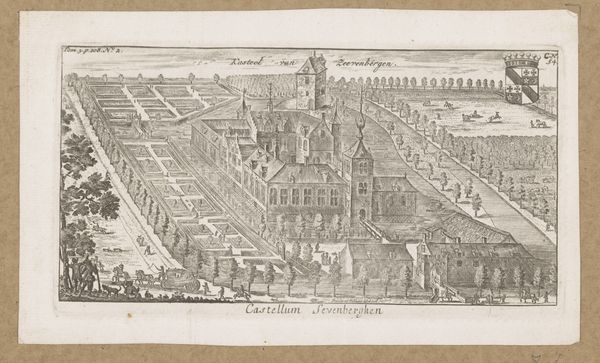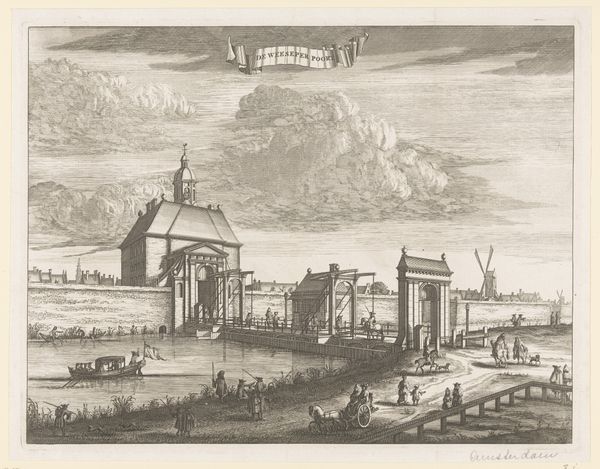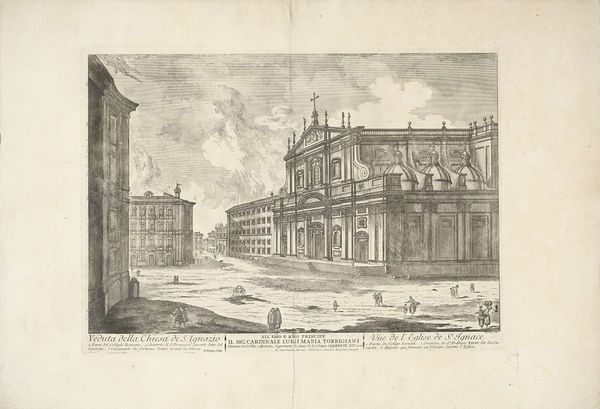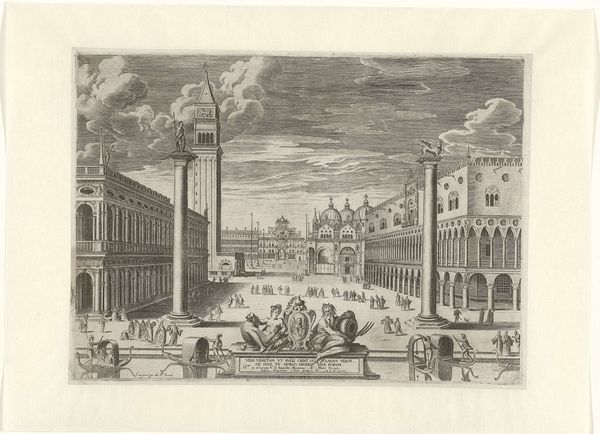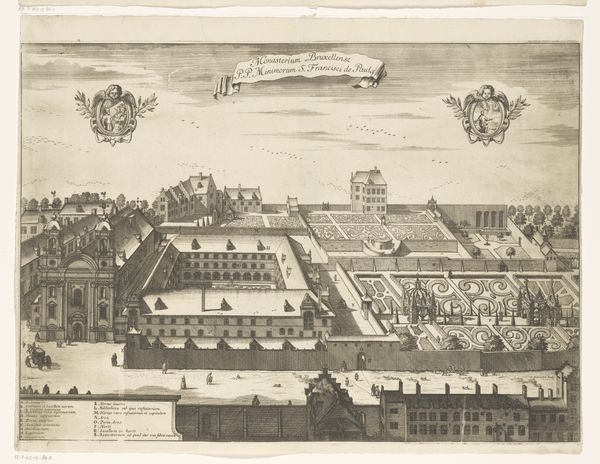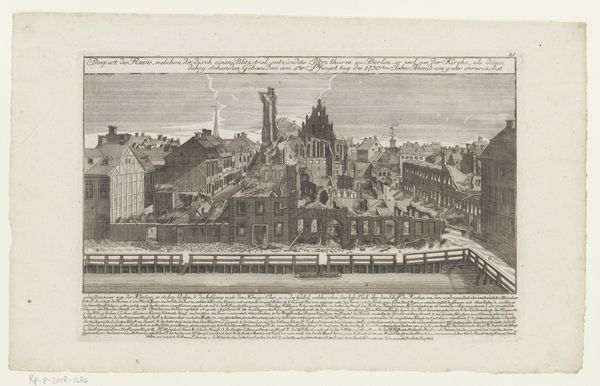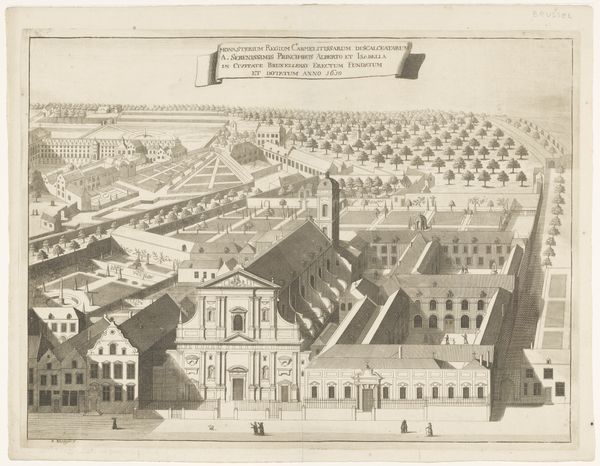
print, etching, engraving, architecture
# print
#
etching
#
landscape
#
etching
#
romanesque
#
geometric
#
cityscape
#
engraving
#
architecture
Dimensions: height 304 mm, width 400 mm
Copyright: Rijks Museum: Open Domain
Editor: Here we have "View of the Capitoline Hill in Rome," an etching and engraving by Georg Balthasar Probst. Created sometime between 1742 and 1801, it gives us a bustling view of this famous Roman landmark. I'm struck by how meticulously detailed it is; you can almost feel the heat rising off the stones. What stories do you think this piece is trying to tell us? Curator: Oh, this print breathes with the echoes of Rome, doesn’t it? Forget straight lines – it’s all about capturing the feeling of a living, breathing city. Probst gives us this fabulous dance of shadow and light that makes the buildings feel almost… theatrical. Do you see how he contrasts the imposing architecture with the everyday bustle of people? It’s like a stage set, frozen in a moment of vibrant chaos. Editor: It really does feel like a stage. And I notice those steep steps leading up to the church – that must have been quite the climb! Was Probst just aiming for accuracy, or was there more to it? Curator: "Accuracy" is such a stuffy word, isn’t it? While there's that representational purpose, I think he's also capturing something deeper - the weight of history pressing down, but also the vitality of the present bubbling up. I suspect, my dear Editor, that Probst wasn’t merely documenting, but also dreaming – weaving a little bit of his soul into those ancient stones. What do you reckon? Editor: I think you're right. There's definitely a sense of awe that goes beyond just recording what was there. It's more like a love letter to Rome, in a way. Curator: Exactly! Perhaps a slightly melancholic one, yearning for a perhaps glorified past that never existed. It's wonderful how a simple print can spark such complex emotions.
Comments
No comments
Be the first to comment and join the conversation on the ultimate creative platform.
